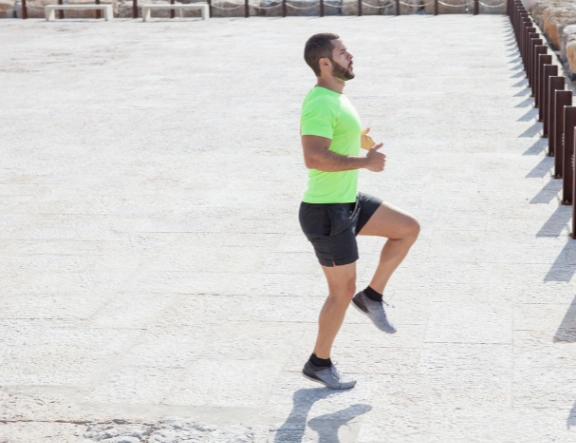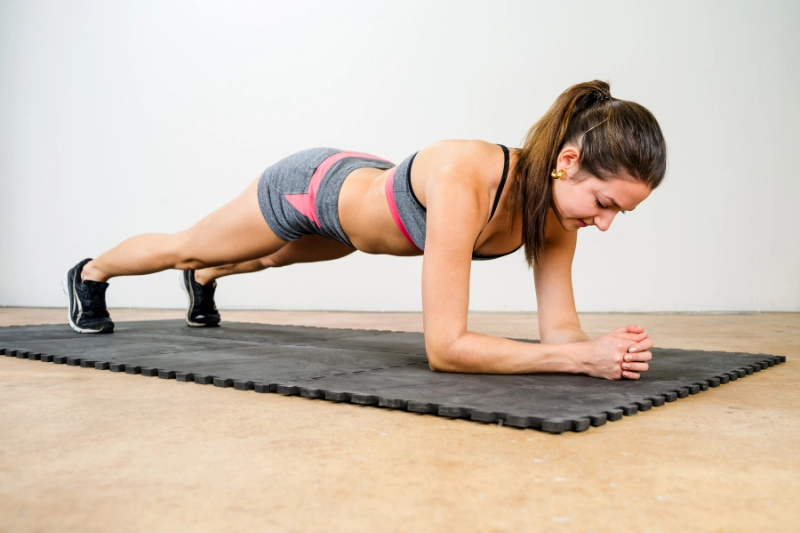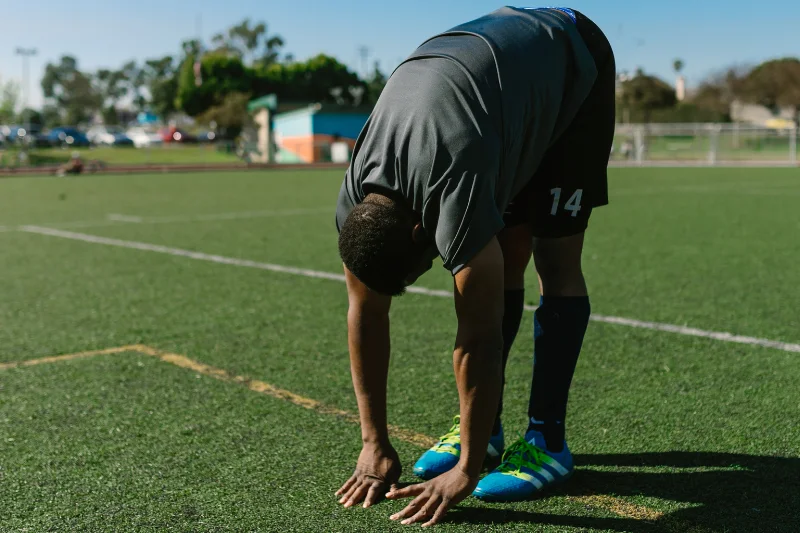If you engage in regular physical activity, the best way to reduce your risk of injury is with warm-up routines. The warm-up routines run close to ten minutes and include a few elements. Typically, there is some stretching and other movements intended to increase blood flow to your muscles, raise your body temperature, and help with flexibility.
It is by performing warm-up routines before you engage in any kind of physical activity that you can avoid injury. Here are a few simple warm-up routines to inspire you to use or create your own so that the next time you are about to do something physically demanding, your body is prepared.
Types of Warmup Routines
Arm Reach

This is an arm stretching exercise.
In a standing position, place your feet hip-width apart. Rotate your body to your left and swing your extended right arm across your chest. As your arm moves, twist your upper body at the waist.
Repeat with your left arm but rotate to the right. Perform this movement for up to a minute on each side.
Squats

This will hit different leg muscles.
Assume a standing position with feet hip-width apart. As you bend your legs at the knee, shift your hips back. Keep your knees behind your toes. Clasp your arms in front of you at your waist.
Return to a standing position and repeat. Perform squats for up to one minute.
Knee Lift

This exercise requires you to tighten your core while performing it.
In a standing position, place feet slightly further apart than hip-width. Clasp your hands behind your head pointing the elbows ahead of you. Lift your left knee to your left elbow. Return to the standing position.
Switch to lifting your right knee to your right elbow. Repeat this exercise for up to one minute on each side.
Lateral Lunge with Arm Reach

The proper form when performing a lunge is to keep your knees behind your toes and shift your hips back.
Stand with your feet slightly wider than shoulder-width. Extend your right arm and touch your left foot. To reach the foot, shift your hips back and bend at the knees.
Repeat by using your left arm to reach your right foot. Complete up to 30 seconds on each side.
Jogging In Place

This will get your heart pumping.
Stand with your feet hip-width apart. Begin jogging without moving forward. Start slow and increase your speed. Eventually, slow down to where you started and then come to a complete stop.
Perform this for up to one minute.
Plank Stretch

To perform this correctly, do not allow your back to sink to the ground. Practicing good form prevents back injury.
From a standing position, bend down and walk your hands in front of you until your body is parallel to the floor. Hold your core tight and then reverse the steps until you are in a standing position again.
Repeat this exercise for up to one minute.
Hamstring Stretch

This will warm up your legs.
From a standing position, bend at the waist and reach for your toes. Keep your feet flat on the floor and stretch until you feel it in your hamstrings.
Hold this position for up to 15 seconds and repeat.
Knee Hugs

This will help stretch your back.
Lie face up on the floor. Bending at the waist, pull your bent knees towards your chest. Wrap your arms around both of them as if you are hugging them. Slowly pull your knees closer to your chest until you feel it.
Hold this position for up to 30 seconds and repeat.
Do You Need a Physiotherapist in Redcliffe Qld?
Contact Newport Physio and Health today to learn more great physio exercises to aid in injury prevention. Physio Newport can help you feel better. Contact them today to find out more.
Conclusion
One of the best ways to reduce your risk of injury is to perform warm-up exercises before you engage in physical activity. Not only do you increase blood flow to your muscles and joints so they can meet the demands of the activity, but you also increase your body’s flexibility and temperature. Warm-up exercises help warm your body up for whatever you intend to put it through.

When you have properly warmed up, you reduce the risk of injury as your body has had time to prepare. For more assistance with warm-up routines, contact your local physiotherapist.